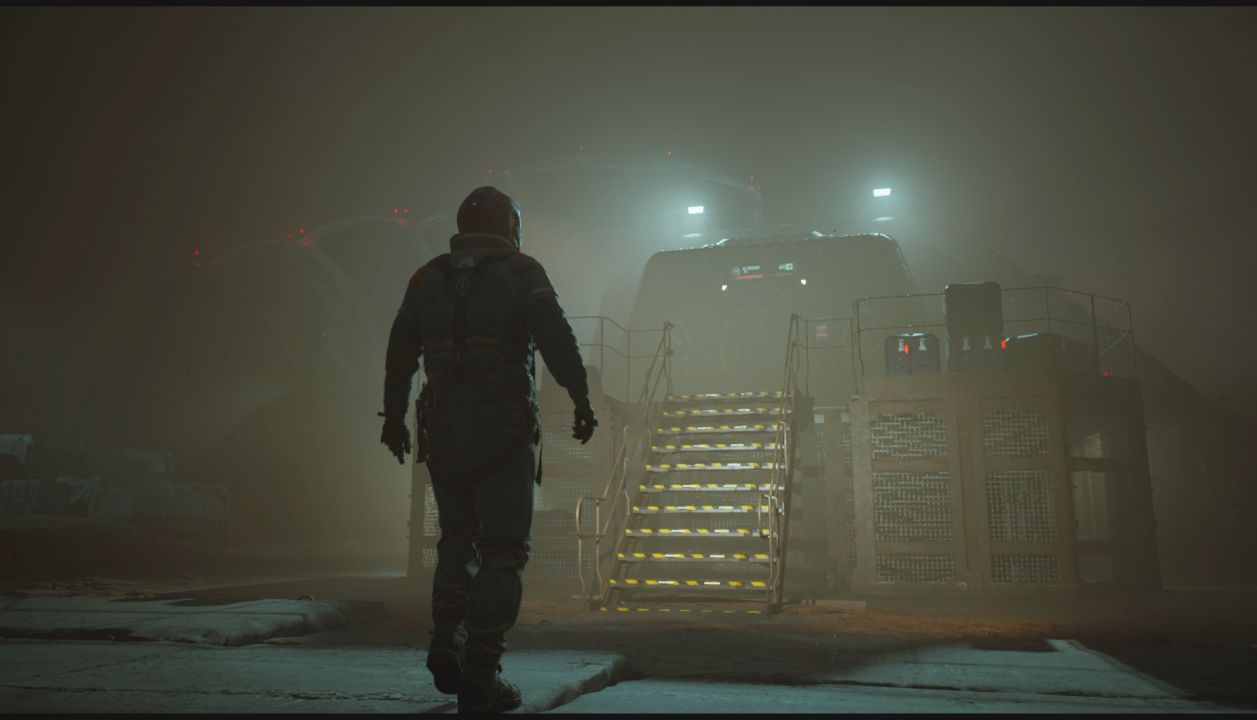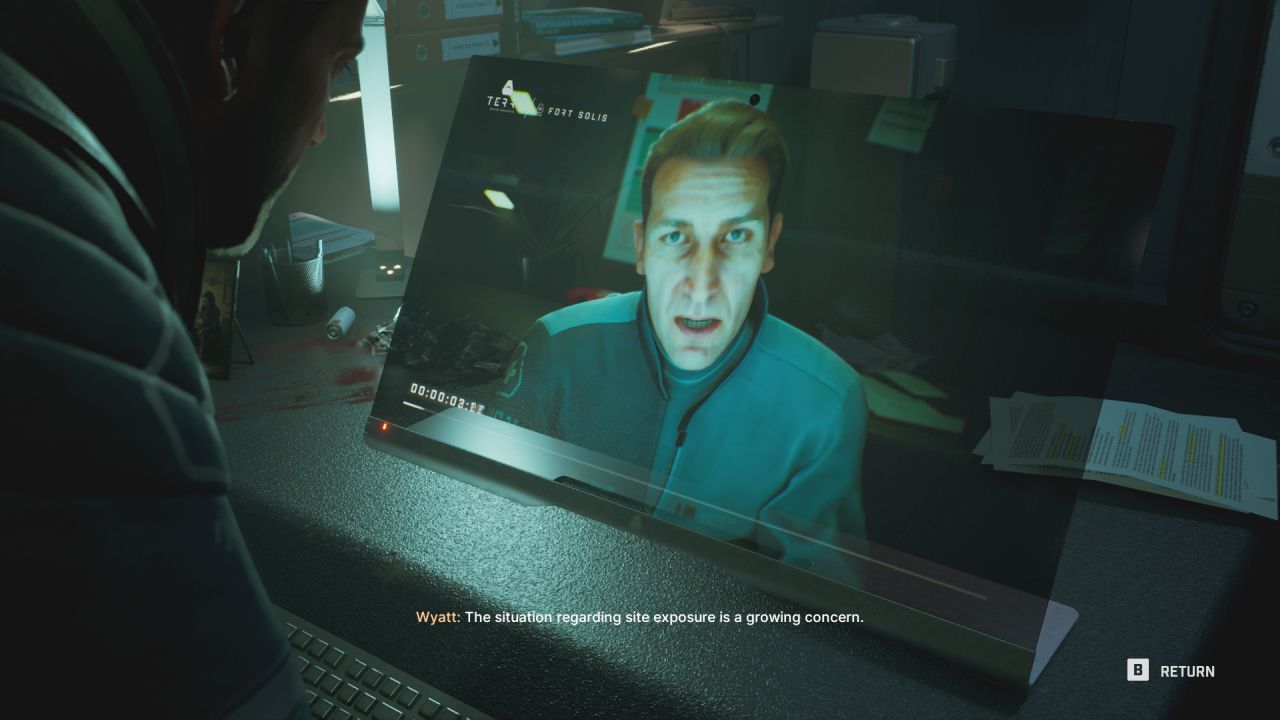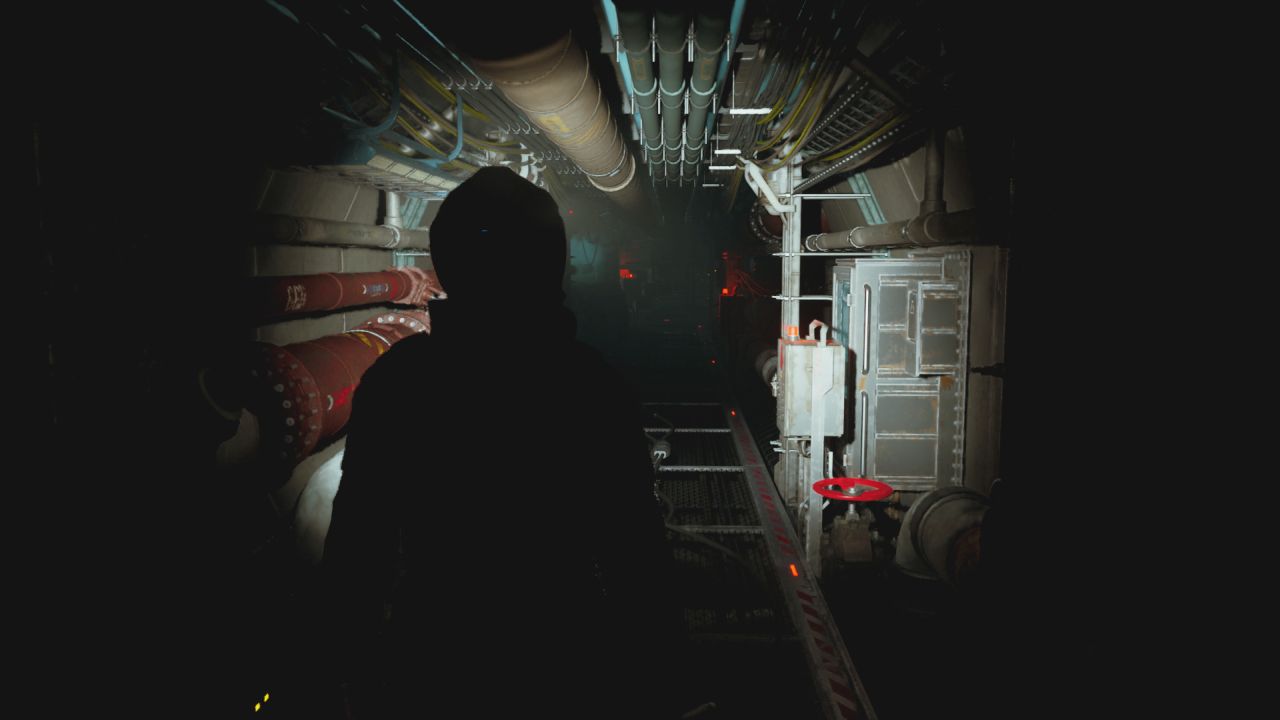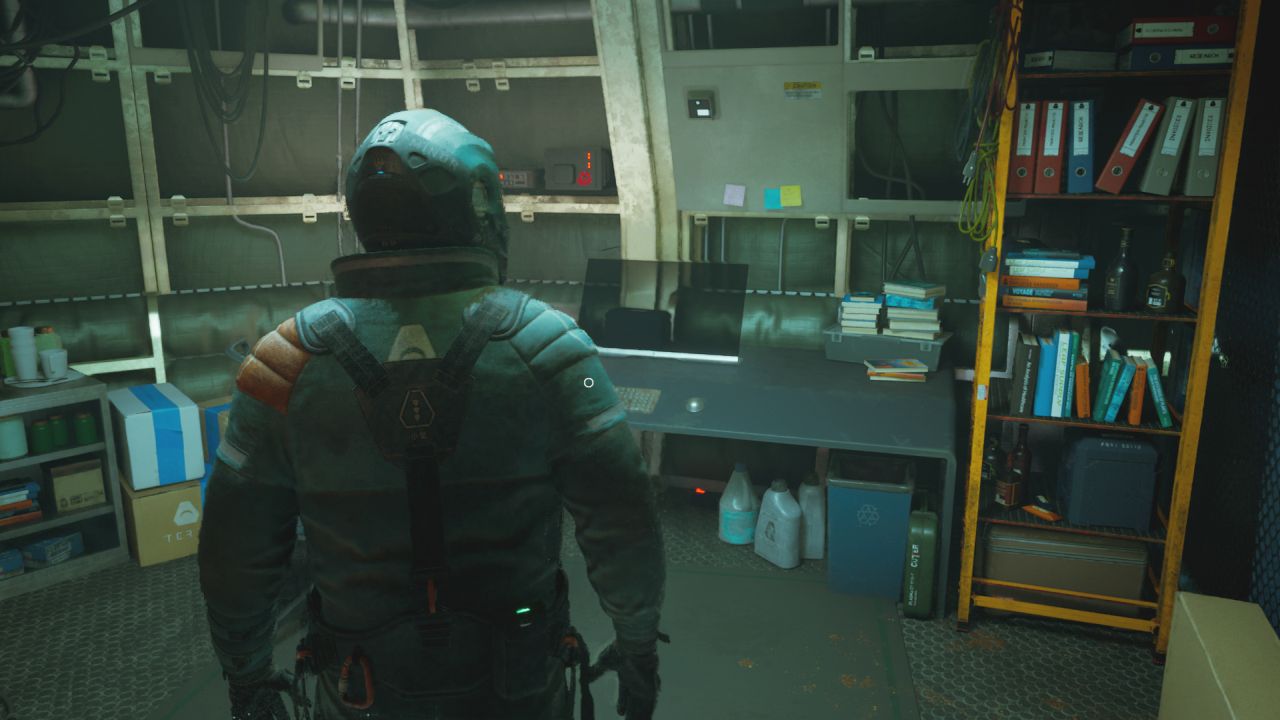Fort Solis Review
Storm walking
Walking simulators seem to be less popular these days, or they are getting lost in the storm of new releases. It could be that developers are choosing to incorporate basic interaction to avoid being lumped into a sub-genre that many view in a negative light. Fort Solis is one of those borderline walking simulators, with just enough interaction to ensure players stay alert while they walk slowly around a Martian base. It is also a third-person psychological thriller with a focus on cinematic presentation, aided by good visuals and effective character performances. While it has some nice moments over its short runtime, Fort Solis’ unclear story and sluggish interaction eventually take a toll.

The story takes place on Mars in 2080, many years after humans established various settlements on the red planet. Jack Leary and Jessica Appleton are two engineers repairing a drilling platform just before a storm is about to hit. Jack receives an alert that an alarm has been triggered at Fort Solis, an older base not far from their location, and he decides to investigate alone before the storm gets bad. When he arrives, nobody is around to greet him and there is no immediate indication of anything untoward. As the night lengthens, the storm strengthens, and less encouraging signs appear: damaged equipment, blood spatter, and dead bodies. So he searches crew quarters, recreation areas, and medical facilities to find out what happened.
Uncovering the mystery is primarily done in typical walking simulator fashion, by listening to audio logs, reading messages, and watching video diaries created by the small six-man crew stationed at Solis. To find the clues, Jack will need to unlock internal doors, cycle airlocks, and occasionally find passwords. The base is relatively contained and there is a curated path for Jack to follow, due to restricted access and blocked paths. Jessica usually stays in radio contact, offering information on Solis and additional speculation. Later in the game, you will take control of Jessica and more freely explore the Martian surface, while the red dust blows viciously.
The performances from the main cast are mostly up to the task. Jack, voiced by Roger Clark, is monotone and clichéd, but keen to find answers, even when things look grim. His approach is fine but he does not always tell Jessica what is happening, leading to unnecessary confusion. Jessica brings a more jovial attitude and a younger viewpoint. She is played well by Julia Brown, but her jokey dialogue is not always tonally appropriate, especially near the end, and we learn next-to-nothing about her. The two engineers are on good terms, with a relationship that is almost like a father and daughter. Unfortunately it is also fairly shallow, with only a few morsels of personal connection sprinkled between the search for answers.

The base’s six crew members are mostly seen in the video diaries they recorded at their desks. The actors playing the crew do fine but there is only so much that can happen with characters sitting and talking. Wyatt Taylor, voiced by Troy Baker, is the most important of the group. He is the medical officer and is concerned about the deteriorating health of seasonal workers. He has some issues with his crewmates, particularly regarding their laissez-faire approach to health and safety. This creates inner battles and frustration, as he tries to figure out the best way to handle it. He is more emotional than the rest, and misses his family badly, making him more human. Troy does a good job as Wyatt but he’s not given enough minutes, or latitude, to take the character where it needed to go.
Unfortunately, despite the decent performances, the story is mostly a letdown. The biggest issue is that it is just too vague for too long. This is often the case with walking simulators, as they keep players guessing and use misdirection. Some important logs can be missed, if you follow the most efficient route, which will leave many confused. After replaying the whole game and scouring all areas to find every narrative log, they still did not provide enough concrete answers. Another problem is that the ending is disappointing. It makes the adventure seem like a waste of time, with questionable logic and annoying outcomes because characters do stupid things, like in a cheesy horror movie.
Because it is a psychological thriller, there are understated but valuable horror elements throughout the four-hour runtime. It does not rely on gore or violence, and instead puts emphasis on ambiance and tension. It makes good use of dark environments, low-key horror music, intermittent noises, and a handful of unexpected events. It is happy to be quiet and that is refreshing when it is often easier to be loud. Due to the subtlety, there is one brilliant (albeit barely visible) jump scare when Jack is near an airlock, but it also fails to capitalize on it because of a tame follow-up. With a bit more traditional horror, the game might have found the perfect balance.

As an adventure that is close to a walking simulator, there is not much participation required by the player. Jack and Jess both have a multi-tool on their wrist, which overrides doors, stores narrative logs, and has a map for basic navigation. There are simple quick-time events when climbing or opening things. Most QTEs can be ignored because the animation will adjust and carry on, meaning you cannot fail. Interestingly, the slightly different alternate ending requires the player to do nothing at a specific moment—but it is not worth pursuing. As mentioned there are minor puzzles to solve, including rebooting servers in sequence, but anything that requires neurons to fire is a rare thing.
Instead, players will spend most of their time walking painstakingly slowly thanks to the motion capture. There is no run or even a walk-a-tiny-bit-faster option. The lack of a faster movement speed is annoying when there is occasionally a reason to move with urgency. Controlling Jess and Jack is more like steering a tank that is unable to scale Martian rocks the size of my big toe. The motion capture is also used for every interaction to make it more cinematic. This works, in combination with no HUD, but it also means your character will do a silly loop, to get in the proper starting position, just to pull a lever slowly.
The game does look awesome and is not far behind the likes of The Callisto Protocol. Using Unreal Engine 5 to its fullest, the volumetric lighting and shadows are consistently great, especially through dim tunnels or across the turbulent Martian surface. The base interior has excellent traces of occupancy and great texture work. Faces of the main characters are quite detailed and look fairly realistic inside their space helmets. It is not a perfect visual package though. In low-light environments, of which there are many, walls shimmer with strange blobs of light. The always-on temporal anti-aliasing leaves horrendous trails behind the player, most obvious against red walls. And while the Martian dust storm looks awesome, it can hurt the otherwise stable framerate when you are lost in the thick of it.

There will be an audience that appreciates Fort Solis for what it is, but even they may rue squandered potential. The premise and setting are simple but effective, thanks to the fantastic Martian atmosphere, understated horror, and great visuals. Well-known actors provide adequate performances in what is essentially a psychological thriller mixed with a walking simulator. But things fall by the wayside because of a narrative that is too ambiguous and an ending that brings no satisfaction. Some characters are not given enough and others have spotty dialogue. The game is only 3-4 hours long, with a painful walking speed and sluggish interactions that make it hard to stomach a replay. Fort Solis has appreciable qualities but needed better footwork before it was pushed out into the storm.
 Comments
Comments












